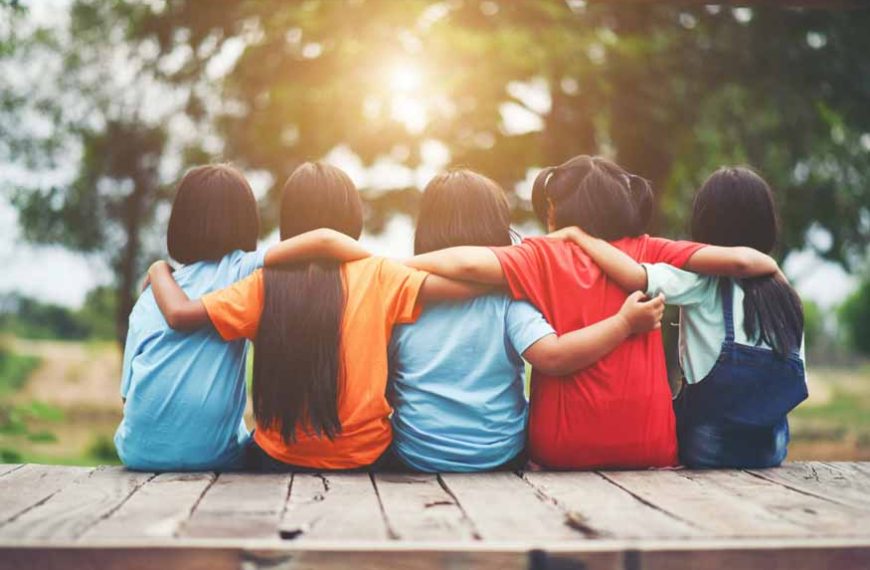Preschoolers’ early growth includes introducing them to the idea of kindness. Children are only beginning to understand how to interact with people at this age and how their actions influence those around them. Empathy and compassion education aids in the development of moral character and critical social skills. The following suggestions will help you instil kindness in preschoolers:
- Lead by Example:
- Use Children’s Literature:
- Use Puppets:
- Learn About Emotions:
- Answer Their Questions:
- Allow Conflict Resolution:
- Do Community Service Projects:
- Implement Kindness Rituals:
- Model Inclusion:
- Take Volunteer Trips:
- Do Kindness Activates:
- Encourage Sharing:
Kids pick up knowledge best through observation. Set an example for the conduct you wish to observe in others. Be kind, provide assistance to those in need, speak kindly to others, be patient, and understand other people. The grownups in their life are constantly being observed by children. Allow compassion to be shown via your deeds. When your youngster shows kindness towards others, give them praise. They will be more likely to repeat such behaviours as a result of this encouraging feedback.
It’s a great idea to promote the concept of compassion by reading books together. There are tons of fantastic picture books that highlight generosity, compassion, sharing, inclusivity, and building strong interpersonal relationships. Some of the examples include “We All Sing with the Same Voice” by J. Philip Miller and Sheppard M. Greene, “Be Kind” by Pat Zietlow Miller, and “The Kindness Book” by Todd Parr. To measure understanding and keep the youngster interested, probe the child both during and after reading. Reading literature offers a cosy and entertaining environment for discussing and learning about constructive social skills.
Puppets provide another fun way to demonstrate kindness and are less intimidating for some children than role playing themselves. Have a discussion between two puppets on being kind – what does it mean, ways to be kind, how it feels when someone is kind to you etc. The puppets could act out a situation where one helps the other, for example picking up something they dropped or showing them how to share. Let the child also manipulate one of the puppets and act out kind behaviours.
Books and activities that explore feelings are very helpful for increasing empathy and compassion. Children need help labelling emotions and understanding what others may be feeling. Read books where characters feel different emotions and discuss why. Look at facial expressions in pictures and have children identify if the person looks happy, sad, angry, scared etc. Ask how they can tell. Help them recognize these cues in real life. Share times when you felt different emotions. Dramatic play can also involve expressing emotions.
Preschoolers are naturally curious and will have many questions about human behaviour and interactions. Patiently answering these questions and having discussions about how we treat each other is instrumental in fostering kindness. If a child notices someone looks sad, explain they might feel that way because they had something bad or disappointing happen. If they wonder why someone can’t walk like others, explain that some people’s bodies work differently so they need crutches or a wheelchair to get around. Sensitively answering their observations of differences and difficulties others face builds understanding and compassion.
When problems arise between children, don’t immediately chastise and intervene. If the situation does not escalate to potential harm, stay close by and allow them to work through the conflict on their own. Offer gentle guidance if needed. Support them to express their feelings, listen to each other, compromise and resolve the situation peacefully. Praise them for cooperation and expressing themselves in a constructive manner. Learning to handle differences with others is a vital social skill that leads to maturity and consideration.
It is never too early to engage preschoolers in simple community service activities that demonstrate kindness toward others. Together you might make cards for seniors or bake cookies for new neighbours. They can decorate pots and plant flowers for a retirement home. Visit an animal shelter to drop off donated blankets and treats. Go through their toys to put some gently used ones in a donation box for families in need. Explain how these actions help others. Associated crafts and stories related to the project enrich the learning experience.
Consistently practicing simple kindness rituals makes caring behaviour a touchstone of classroom or family culture. Ideas include: having a “friend of the day” who gets to be first in line, choosing a special activity, hearing compliments, etc. Pass along a “caring stick” where each child names something kind another child did. Sing songs about kindness. Start or end the day by saying something they appreciated that someone did. Regular rituals emphasize that kindness is an essential value.
Set the example of including others and appreciate differences. Gently remind children to invite a child who seems left out to play. Demonstrate how to involve someone with a disability. Learn simple sign language. Look at pictures of children from other cultures. Discuss how we are all unique but equal. Foster a classroom environment where all feel welcomed and accepted regardless of appearances, abilities or backgrounds. Children will emulate and internalize this spirit of embracing all.
Visit places in your community to see people who help others – police stations, fire stations, hospitals, shelters, etc. The trips allow children to witness kindness in action. They get to see firsthand those who help people every day. Meet the volunteers. Ask questions about why they choose to do this work. Back in the classroom, have the children pretend to play the helper roles and act out ways they can be caring to others. The combination of real-world observation and role-playing helps cement the concept.
Turn kindness into an engaging game through various activities focused on completing kind acts. Give children a “kindness bingo” card with squares that contain tasks like “help clean up”, “say please and thank you”, “share a toy”. When they achieve the task, they mark off the square. Getting “bingo” wins a prize. Create a kindness scavenger hunt with tasks around the classroom or home. Hand out “kindness coupons” they can exchange with you for a gift when caught being kind. Invent fun ways for them to creatively practice thoughtfulness.
Sharing helps children learn empathy, generosity and delayed gratification. Encourage them to share experiences at group time or show and tell. Prompt them to share toys and art supplies. Teach strategies for taking turns with limited resources. Share snacks or other items yourselves and pass them around. When you observe kind sharing, recognize and praise the child. Let them see the positive feelings that result from giving to/with others. Ask “How did sharing make you feel?” to reinforce it is uplifting for all.
By actively cultivating empathy, inclusion, and caring in your preschool classroom every day, you help ensure kids experience meaningful social connections now and nurture traits that will serve them well in life. The seeds of kindness you plant and nourish today have the power to bloom into a field of compassion.
For more such interesting blogs, Visit EuroKids















